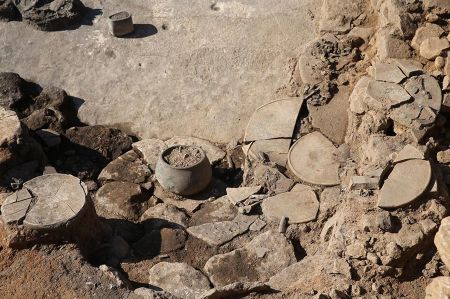Excavations in Karahan Tepe - 8,500 years before our time
- Written by Portal Editor
During our extensive tours through southeastern Anatolia and the multiple visits to the now world-famous excavation site of Göbeklitepe, we also visited other excavation sites, including the one at Karahan Tepe, which is located around 55 kilometres to the southeast.
As in Göbeklitepe, these hills could hardly be explained as natural elevations in terms of geological history, so that here too one had to assume that they were man-made hills. The first hills, or rather their "contents", were discovered in 1997 by Bahattin Çelik near the Kargalı district in the Tek-Tek Dağları National Park. This area is also known to the locals as "Keçilitepe".
Flint, obsidian and stone bowls as finds
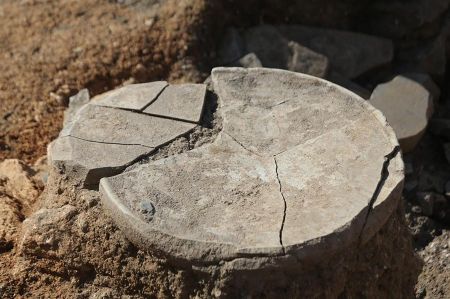 The first excavations took place in 2000 and then again in 2011. As is often the case, the necessary capital for larger-scale excavations was lacking. During these excavations, over 600 smaller finds were made, most of which were stone tools made of flint and obsidian as well as arrowheads. In addition, some stone bowls and axe tools made of river pebbles and pestles made of basalt were found.
The first excavations took place in 2000 and then again in 2011. As is often the case, the necessary capital for larger-scale excavations was lacking. During these excavations, over 600 smaller finds were made, most of which were stone tools made of flint and obsidian as well as arrowheads. In addition, some stone bowls and axe tools made of river pebbles and pestles made of basalt were found.
In addition, hundreds of T-pillars similar to those in Göbeklitepe were excavated, which were arranged in rows and were most likely all cut out of the rock on site. Finds on the west side of the hill, which show half-finished T-pillars, indicate this. The later excavations also showed T-pillars with engraved snakes and other T-pillars with animal figures.
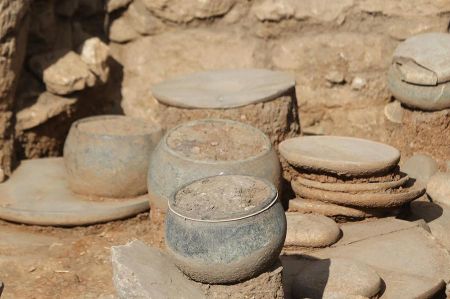 All these findings show that Karahan Tepe was only inhabited during the Pre-Pottery Neolithic period (9500 to 6400 BC, probably between 8500 and 8000 BC), which is more recent than Göbeklitepe.
All these findings show that Karahan Tepe was only inhabited during the Pre-Pottery Neolithic period (9500 to 6400 BC, probably between 8500 and 8000 BC), which is more recent than Göbeklitepe.
According to Bahattin Çelik's reasoning, the hill was in a favourable area for hunting at that time because it lay between the flat Harran plain and the hilly landscape.
But this is only an assumption based on the numerous bone finds. At some point, the inhabitants filled the site with earth and rubble, preserving T-topped pillars carved into the bedrock.
Necmi Karul, an archaeologist at Istanbul University
 The head of the excavations, Necmi Karul, an archaeologist at Istanbul University, told the Anadolu newspaper agency in 2019: "Last year, excavation work was resumed at Karahan Tepe and we found traces of special structures, obelisks, animal sculptures, as well as ornaments and similar symbols." According to Daily Sabah, 250 T-pillars with animal figures were uncovered by 2020. Both sites are part of the Göbeklitepe Culture and Karahantepe Excavation Project.
The head of the excavations, Necmi Karul, an archaeologist at Istanbul University, told the Anadolu newspaper agency in 2019: "Last year, excavation work was resumed at Karahan Tepe and we found traces of special structures, obelisks, animal sculptures, as well as ornaments and similar symbols." According to Daily Sabah, 250 T-pillars with animal figures were uncovered by 2020. Both sites are part of the Göbeklitepe Culture and Karahantepe Excavation Project.
In September 2023, Turkish and German experts discovered more sculptures from the so-called Tepel cultures, the statue of a vulture and a 2.3-meter-high anthropomorphic statue. The naked figure, possibly depicted as sitting, grasps its phallus with both hands. Fingers and ribs were indicated with deep scratch lines, and a kind of V-shaped collar stands out around the neck. This motif in particular is also known from other finds, such as the so-called Urfa Man, a sandstone statue about 1.8 meters high that was discovered during construction work in the city of Şanlıurfa in 1993.
Excavation director Prof. Dr. Necmi Karul stated that the excavations would be completed in 2024 and that this year they were focusing in particular on public buildings.
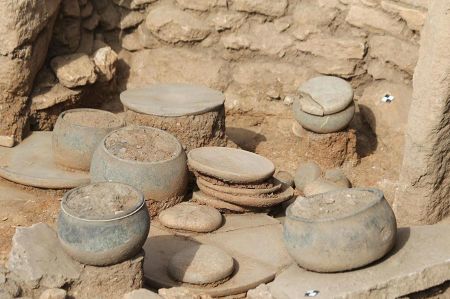 Karul said: “We are continuing to work on the public building complex that we have previously largely uncovered. There is a central building here and we knew that there were smaller buildings for public purposes that were not added on. In one of them we started excavations last year and continued this year. When we reached the ground floor of the building, we came across a room-like area separated by obelisks on a bench.
Karul said: “We are continuing to work on the public building complex that we have previously largely uncovered. There is a central building here and we knew that there were smaller buildings for public purposes that were not added on. In one of them we started excavations last year and continued this year. When we reached the ground floor of the building, we came across a room-like area separated by obelisks on a bench.
We saw that the interior of this area was filled with red, sterile earth and, parallel to this filling process, stone containers and plates were left in the room. The vessels are made of black chlorite stone and are completely decorated with geometric and animal patterns. At the same time, in this context we also came across different groups of finds such as stone objects and beads, which we call batons.
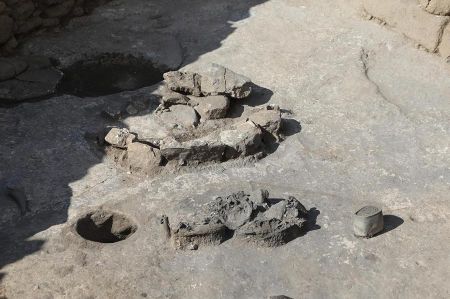 In this context we saw many wolf jaws, leopard, vulture and fox bones. We noticed that the foxes remained in context with their skins. But since there were many fireplaces in the rest of the building and large bull horns and even skulls were left on the floor, we understood that this area had a function related to cooking and was part of the public building complex. We also came across ovens in the building."
In this context we saw many wolf jaws, leopard, vulture and fox bones. We noticed that the foxes remained in context with their skins. But since there were many fireplaces in the rest of the building and large bull horns and even skulls were left on the floor, we understood that this area had a function related to cooking and was part of the public building complex. We also came across ovens in the building."
"The fact that there were many fireplaces in the structure we excavated in Karahantepe showed us an environment that we encountered for the first time," he said. Prof. Dr. Karul explained that these finds provide important clues about the public structures in the region and that they require time for further evaluation. Source: AA (08.11.2024)
Please read as well:
